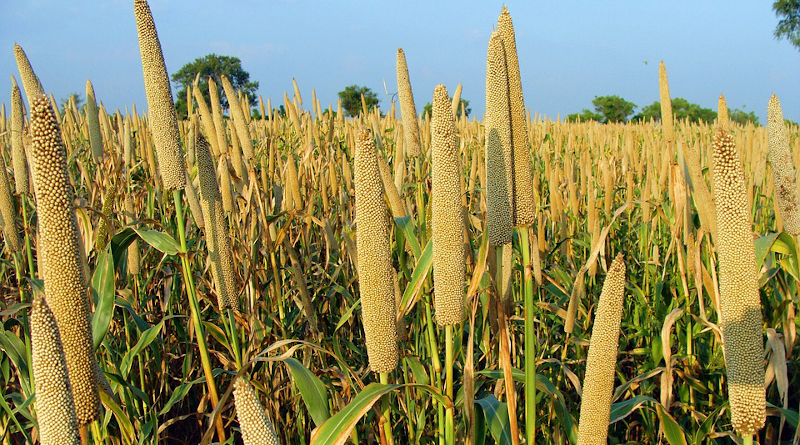Horn Of Africa States: Millets A Future Food For The Region – OpEd
Some of the staple foods of the world include millets. Millet grains have been discovered in pots in archeological sites in China, India, and many parts of Africa and today it forms part of the diet of many countries like Japan, Korea, Russia, Turkey, and of course the Horn of Africa States. Millet is a hardy crop that needs maximum only seventy days to harvest. Millet does not require much of soil or water. It grows on rainwater and is resistant to pests both in the field and in storage. No wonder first humans discovered the grain. (1)
Finger millet, one of the main types of millets is a native plant of the Horn of Africa states and was domesticated and used as staple food before the third millennium BCE. It was transported to South India, probably by the Ancient Horn African Nagas who controlled much of Ancient India, by 1800 BCE. (2)
The Horn of Africa States is currently in the media not for any achievement it made but for the hunger and starvation that is devastating the region. The hunger and starvation of the region can be attributed to many factors, but the these do not add one iota on how to address the root causes, which basically is political and superpower competition in the strategic location of the region. One great humane action is missing from the competition and that is when innocents are involved in the contended ground, differences should be put aside to assist the needy, and in this case, the poor people of the Horn of Africa States, who have no clue on what is happening to them.
In this respect one must applaud India’s Prime Minister, Narendra Modi. The man is corrosive in many respects but should be given credit when it is due. He has called for making millets a food choice for the future and especially since, as he noted in his message, “millets are easy to grow, climate resilient, and drought resistant. Mr. Modi remarked that millets are good for the consumer, cultivator, and climate.” (3)
The message was read by Union Minister of State for Agriculture and Farmers Welfare, Shobha Karandlaje representing India at the opening ceremony of the International Year of Millets at Food and Agricultural Organization Headquarters in Rome, Italy on December 6th, 2022.
Millets are among the earliest crops grown by humans and more specifically in the Horn of Africa States, where it has been a major source of nutrients. It can still become a major source of food for the region, which is suffering from shortage of rains and hence water and peace and stability to allow farmers to till their lands, mostly small holdings, which have been able to sustain them for millennia. The world which is cry wolfing on the hunger and starvation in the region can just let the region be and keep its dogs of war away from the region, and it will find its way.
Hunger and starvation in the region are not natural. It is mostly man-made. Development assistance could be one way the international community can help instead of the food distribution and the petty cash it distributes to the people of the region, which removes people from their lands and hence makes them unproductive and dependent. The world should assist the region devote much of the vast cultivable lands to production of millets and help them grow the grain to avoid repetitive calls for assistance to the region. Investments in the production of millets and teff and other sustainable foods of the region would more helpful than any other foods transported over great distances from distant lands.
Since the United Nations General Assembly declared year 2023 as the International Year of Millets, it is perhaps opportune to have the countries intending to extend assistance to the Horn of Africa States, heed the message and invest in millet production in the region, which will be grateful. Prime Minister Modi, was, indeed, effective in putting forward the call for millets as a food for the future and was supported by a large number of the members of the United Nations Organization. This would, indeed, be a step in the right direction for food security in the region.
Notes:
- The Millet Foundation, The online portal for all things millets (Google).
- Engels, J. M. M.; Hawkes, J. G.; Hawkes, John Gregory; Worede, M. (21 March 1991). Plant Genetic Resources of Ethiopia.
- PM Modi emphasises making millet food choice for future, By AIR News, December 6, 2022

